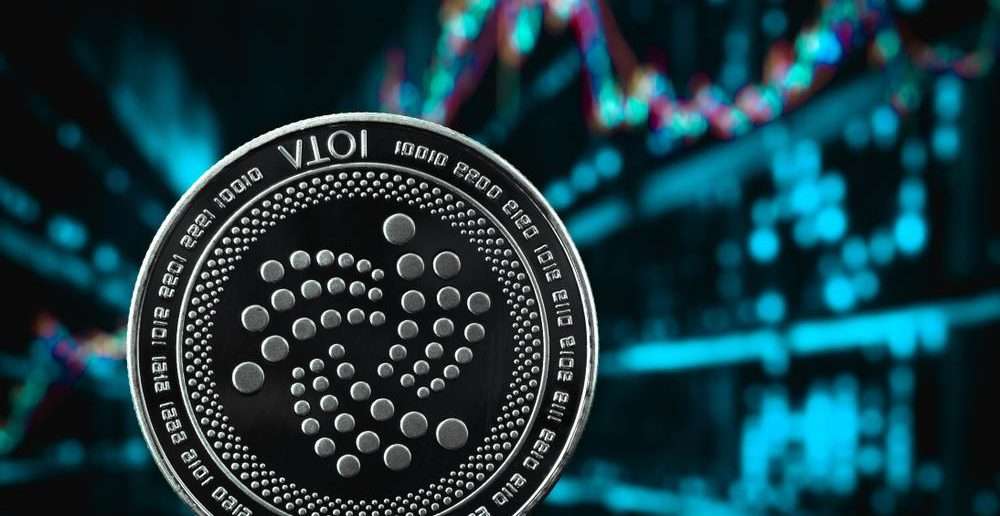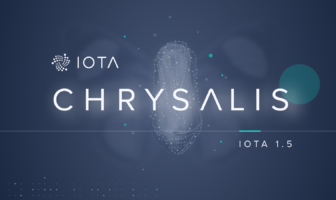What is IOTA?
IOTA is a crypto currency which differs significantly from other crypto currencies due to its technology. In contrast to Bitcoin or Ethereum, IOTA does not use the blockchain, but the so-called “tangle”. The tangle is a data structure based on the mathematical concept of the Directed Acyclic Graph (DAG).
The verification of the transactions is not done by the miners, who bundle the transactions into blocks and append them to the end of the block chain. Instead, IOTA achieves consensus on the network by requiring each participant who wants to perform a transaction to approve two previous transactions first. This process ensures that the entire network reaches a common consensus on the current status of approved transactions.
The reward for the validation of the previous transactions is the confirmation of your own transaction by a subsequent transaction. This means that no miners (as with Bitcoin) are required to receive a monetary reward for validating the transactions. As a result, transactions in the IOTA network will always be free of charge.
In addition, this architecture offers another advantage. While the blockchain slows down with an increasing number of users, the speed of network transactions at IOTA increases with an increasing number of users. While a blockchain works sequentially, the Directed Acyclic Graph achieves parallelism, allowing transactions to be validated simultaneously. The larger the number of users in the IOTA network, the more secure and faster the overall system becomes.
As already mentioned, there is no mining. The result is that all 2.7 trillion IOTA tokens have already been generated with the Genesis block. The number of IOTA tokens will never change and is therefore not inflationary. You can find the current price of IOTA on our chart page.
The advantages of IOTA
- Scalability: IOTA can be scaled virtually infinitely. The more users use the Tangle, the faster the validation of transactions will take place.
- No transaction fees: IOTA will always remain free of charge.
- Decentralization: IOTA does not require miners and thus avoids centralization by large mining companies or mining pools.
- Quantum immunity: IOTA used a specially developed trinary hash function called “Curl-P”, which is supposed to be quantum immunity.
The basis for the Internet of Things
Although IOTA is traded as a traditional crypto currency, it is designed as the basis for the Internet of Things and for machine-to-machine transactions. IOTA’s vision is to become the new standard for machine-to-machine transactions (M2M) and serve as the foundation for smart homes and smart cities.
The Internet of Things has been an increasingly important topic for years, both in industry and in the private sector. The Internet of Things is expected to reach 50 billion connected devices by 2020.
In modern factories, machines collect hundreds of data and pass it on to other machines to control production. In agriculture, sensors collect data on soil values and harvest success. Agricultural machines drive autonomously and send data to the farmer. In the private sector, the fitness bracelet collects data about one’s own body and passes the data on to the health insurance company. E-cars should not only drive autonomously, but also pay toll fees and auto insurance themselves. The amount of car insurance depends on the driver’s driving behaviour, which is measured by sensors and transmitted to the insurance company.
As the examples shows, IOTA is not only limited to monetary transactions, but can also store information within tangle transactions or even distribute and store large amounts of data across multiple transactions.
Even in a small network, be it a factory or a network of farmers, this means that potentially thousands of transactions per second have to be executed when the machines communicate with each other and share resources. The transaction costs will be in the micro range. This is where IOTA comes in. Due to its architecture, it is ideal for micro payments. Any fees charged for transactions would render micropayments unfeasible. To serve as the backbone of the M2M economy, IOTA must therefore be free to use.
This makes IOTA the perfect crypto currency for the Internet of Things.
IOTA Foundation and ICO
The IOTA project was founded in 2015 by David Sønstebø, Sergey Ivancheglo, Dominik Schiener and Dr. Serguei Popov. Within the framework of the Initial Coin Offering (ICO) carried out in December 2015, IOTA was able to collect more than 1,300 bit coins (around USD 500,000). The team then founded the non-profit organization, the IOTA Foundation, based in Berlin, which has since taken over the administration of the project.
Partnerships
Although the project is still very young, it can already boast a number of well-known partnerships. With Fujitsu, Bosch and Volkswagen, IOTA has found three globally renowned partners who have long-term ambitions to use IOTA’s Tangle technology. The first proof-of-concepts have already been successfully presented by Volkswagen and Fujitsu. IOTA also has a partnership with Taipei City, the city administration of Taiwan’s capital. The aim of the cooperation is to create a Smart City.
IOTA has also founded the “IOTA Marketplace”. More than 80 partners of the “IOTA Marketplace” include Microsoft, Philips, Telekom, Fujitsu and Bosch. The aim of the platform is to introduce a common data marketplace. Participants are encouraged to securely provide and share their data using IOTA technology.
Criticism towards IOTA
To protect the network from certain attacks, IOTA currently relies on a coordinator. The coordinator checks valid transactions, which are then validated by the entire network. Previous problems with the coordinator have led the crypto community to call the network centralised because of the coordinator. However, the development team explained that there are plans to remove the coordinator as soon as possible once the network is large enough.
Furthermore, in August 2017, IOTA was subjected to harsh criticism by a team from the MIT – Massachusetts Institute of Technology. The MIT had published an investigation which considered the cryptographic hash function Curl-P developed by IOTA to be questionable for security reasons. The researchers found that Curl was neither collision-proof nor pseudo-random. This serious vulnerability would have allowed signatures for IOTA payments to be forged. The MIT informed the IOTA developers and they patched their system. Nevertheless, the IOTA developers were sharply criticized, especially for their handling of the publications.
Subscribe to our daily newsletter!
No spam, no lies, only insights. You can unsubscribe at any time.
If you are now interesstedin buying IOTA, we recommend you to visit our tutorial – how and where to buy IOTA.





